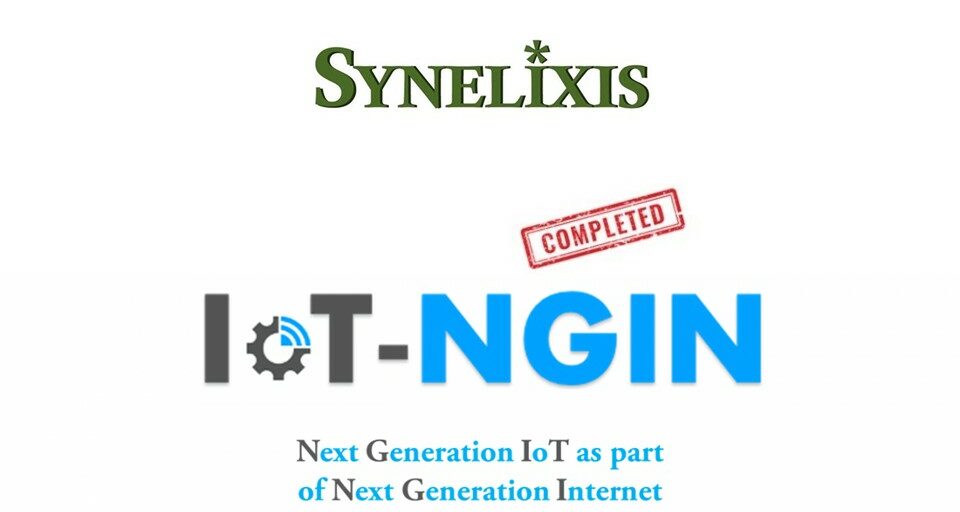News

- November 30, 2023
- Research Projects
The IoT-NGIN Project Completed.
After three years of intensive work, from October 2020 until the finalization of the project in 2023, we are proud to announce that IoT-NGIN project has been completed successfully! IoT-NGIN (short for Next Generation IoT as part of Next Generation Internet) introduced novel research and innovation concepts paving the way to Digital Transformation at European level.
Aiming to support a wide range of architecture designs in the next generation of IoT, the IoT-NGIN meta-architecture has been defined as the family of reference IoT architectures. IoT-NGIN has provided 5G enhancements via research on relay selection strategies to support 5G network coverage extension via Device-to-Device (D2D) communications, a prototype 5G Core with Time Sensitive Networking (TSN), as well as implementation of the Network Slice Management System (NSMS) following the 3GPP specifications [TS 28.531]. 5G capabilities exposure APIs for facilitating management of 5G services, network and device, as well as a secure edge cloud framework for execution of microservices at the edge have been developed. Moreover, IoT-NGIN developed a hybrid edge-cloud MLaaS (Machine Learning as a Service) framework, in line with BDVA SRIA4.0. The platform covers the whole ML lifecycle, supporting ML training via privacy-preserving Federated Learning, XAI online learning and reinforcement learning and polyglot model sharing. Furthermore, IoT-NGIN provides enhancements towards Human-Centric IoT through Ambient Intelligence and Tactile Internet focused on enhanced object recognition, based on both visual and non-visual methods, FIWARE-based Digital Twinning of IoT devices and pervasive security via a flexible identity management and access control service, as well as innovative interfaces via Augmented Reality (AR) tools. Contributions to IoT cybersecurity include novel techniques for identification of common vulnerabilities in IoT devices, GAN and ML based attack detection in FL systems and the Moving Target Defense (MTD) Honeypots framework. Data sovereignty is addressed through the Decentralized Interledger Bridge (DIB), as well as contributions to Self-Sovereign Identity (SSI) technologies, such as Decentralised Identifiers (DIDs) and Verifiable Credentials (VCs). The novel concept of DLT-enabled Meta-Level Digital Twin (MLDT) has been realized as Semantic Twin (ST), which provides the description of Digital Twin and device data and metadata.
Pilot activities in each Living Lab, through the execution of 10 use cases by the project and 10 additional cases by Open Call projects, have validated the IoT-NGIN value in 4 application verticals, namely Smart City, Smart Agriculture, Industry 4.0 and Smart Energy.
Last, but not least, the project has already raised significant impact through 3 contributions in 5G SA6 accepted as standards, the foundation of Twinbase startup exploiting IoT-NGIN outcomes, as well as scientific contributions in notable journals and events.
Synelixis has been the Technical Coordinator of IoT-NGIN and contributed to the design and development of tools towards privacy preservation and cybersecurity in Federated Learning systems, especially those involving IoT and edge devices. Beyond technological development and technical coordination, within IoT-NGIN, Synelixis led the Smart Agriculture living lab, powered by Synelixis’ SynField, experimenting on smart irrigation, precision aerial spraying and moving sensors’ aided crop harvesting use cases.
With the successful completion of the IoT-NGIN project, Synelixis eagerly embraces the wealth of knowledge and outcomes achieved. We’re steadfastly focused on harnessing these invaluable insights as catalysts for our future innovations. This accomplishment serves as a cornerstone, propelling us towards a future where we continue to pioneer groundbreaking solutions and set new industry standards.
